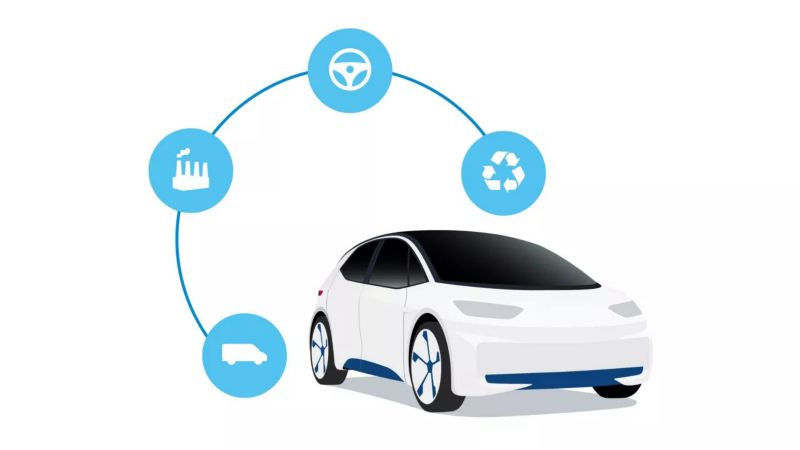The allure of electric vehicles (EVs) has surged in recent years, driven by the promise of cleaner transportation and a sustainable future. Many proponents tout their potential as the panacea for the climate crisis. Yet, beneath this glossy surface lies a complex reality that warrants thorough examination. Do electric cars truly help combat climate change, or do they merely shift the burden of carbon emissions to another sector? In seeking answers, we must navigate the intricate web of production, usage, and disposal of these vehicles.
To begin with, one must consider the emission profile of electric vehicles compared to their internal combustion engine (ICE) counterparts. Advocates argue that EVs produce zero tailpipe emissions, which inherently reduces urban pollution and contributes to public health improvements. However, this assertion glosses over the fossil fuel dependency of electricity generation in many regions. In areas where coal or natural gas contributes significantly to the electricity mix, the perceived benefits of EVs are diminished, as the carbon footprint shifts from the vehicle itself to the power plant. Thus, while electric cars may emit no pollutants on the road, their life cycle may still entail an extensive carbon footprint.
Moreover, the production of electric vehicles presents another layer of complexity, primarily due to battery manufacturing. The extraction of lithium, cobalt, and nickel—key components in EV batteries—poses environmental and ethical challenges. These materials are often mined in regions where environmental regulations are lax, leading to habitat destruction, water pollution, and severe human rights violations. For instance, cobalt mining in the Democratic Republic of Congo is notorious for its dubious labor practices, often employing child labor. Consequently, one must ponder: does the environmental cost of powering up an electric vehicle veer into moral ambiguity?
Transitioning to the operational phase, electric vehicles do hold the upper hand regarding energy efficiency. They convert about 60% of the electrical energy from the grid to power at the wheels, while traditional gasoline vehicles convert only about 20% of the energy stored in gasoline. This efficiency is indeed commendable. However, the efficacy varies significantly based on driving habits, vehicle design, and charging infrastructure. Furthermore, the democratization of charging stations is uneven; rural areas may face logistical hurdles in accessing charging facilities, making the supposed benefits of EVs inaccessible to many.
As the debate continues, the power of innovation should not be underestimated. Renewable energy sources are proliferating, thereby reshaping the profile of electric vehicle emissions. Countries increasingly invest in wind and solar energy, steadily reducing their grid’s carbon content. In regions powered by clean energy, EV adoption translates to substantial reductions in greenhouse gas emissions. However, the current rate of this transition is not uniform across the globe, leaving many locales reliant on fossil fuels and diminishing the overall impact of electric vehicles on climate change.
To further complicate discussions, we must address the end-of-life considerations for electric vehicles. While proponents often neglect this aspect, the disposal and recycling of batteries present significant environmental challenges. Current recycling technologies can efficiently reclaim materials such as lithium and cobalt, but infrastructural limitations hinder the widespread implementation of these processes. Without robust policies and advancements in battery recycling technology, the eventual disposal of EV batteries may pose another environmental risk, counteracting the initial emissions reductions gained from their use.
The societal promise of electric vehicles goes hand in hand with the narrative of job creation in the green economy. As EV manufacturing and the supporting infrastructure expand, they indeed create employment opportunities. However, this progress should not come at the expense of traditional automotive industries without thoughtful transition plans. The risk of job displacement for thousands of workers in fossil fuel-related sectors must be addressed with comprehensive retraining programs to ensure a just transition to renewable energy.
In summation, while electric vehicles offer remarkable potential to address climate change, their role is far from simplistic. They serve as both a symbol of progress and a complex variable in the broader equation of environmental impact. A nuanced examination reveals that while they can mitigate some emissions and lower urban pollution, they also reallocate the environmental burden from the vehicle to the energy sector and raw material extraction processes. The transformative power of electric vehicles lies in their echelons of implementation and systemic integration into a wider vision of sustainable development. As we continue to navigate the complexities of climate change, it is vital to maintain vigilance, prioritize equity, and continually adapt regulations and technologies to maximize the environmental benefits of electric vehicles.







